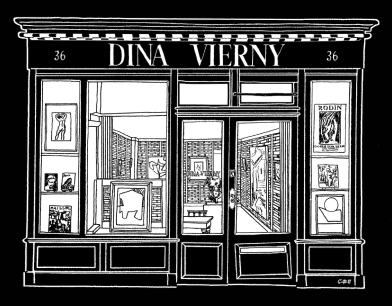All Exhibitions here
Galerie Dina Vierny recently reissued one of the only tapestries made by Robert Couturier around 1960. Although better known for his work as a sculptor, the artist also produced drawings, lithographs, small furniture and tapestries, as shown here. However, we know of very few examples of the artist in this discipline, because in addition to "Untitled" from 1960, there is one other small-format tapestry and two unfinished tapestry cartoons.Januray 17, 2024
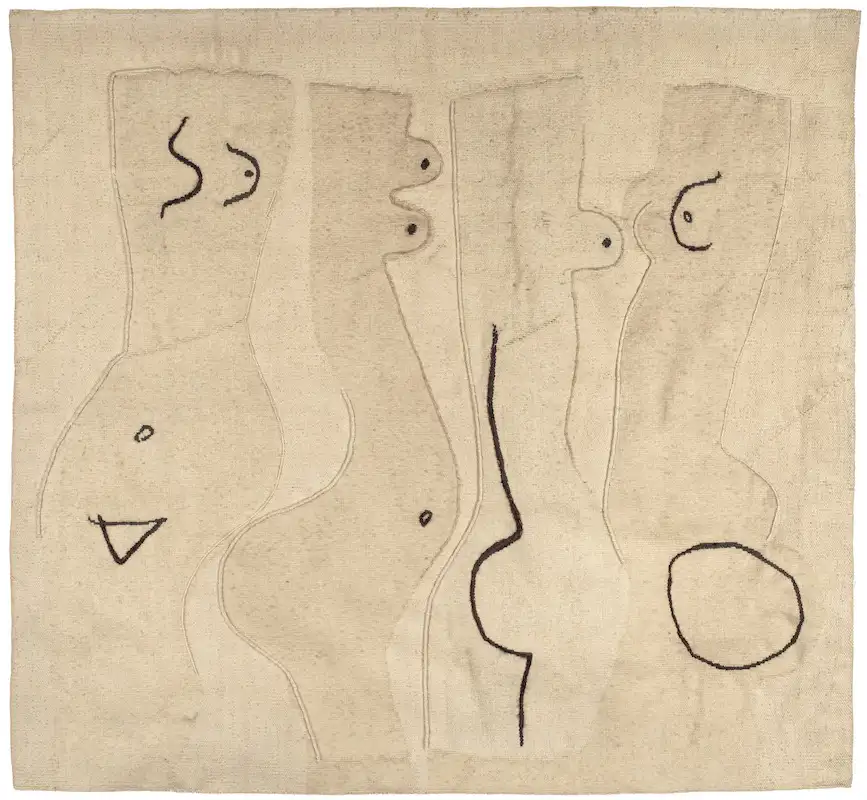 Robert Couturier, "Untitled", circa 1960, hand-woven Aubusson wool tapestry, 150 x 143 cm
Robert Couturier, "Untitled", circa 1960, hand-woven Aubusson wool tapestry, 150 x 143 cm The original tapestry, now in a private collection, was woven by Claire Rado (1941-2017) in her studio in Suresnes. Rado, who was also an artist, was particularly renowned for her transpositions of Pierre Soulages' cartoons into tapestry. This two-tone tapestry, almost square in format, presents four geometrically simplified female bodies, their silhouettes summed up in a few strokes that play on the texture of the fabric. This drawing is part of Robert Couturier's formal research in the early 1960s, at a time when he was undertaking his first sculptures in cut-out iron and when a long stay in Japan led him to a greater stylisation of forms, as shown by four cut-out statuettes made in Japan in 1963. This idea of drawn, simplified figures is reminiscent of Couturier's style, which asserted itself in the 1960s with his "image of sculpture", as the art historian Thierry Dufrêne points out: "It was the birth of a style of sculpture in which cut-out and deformation took precedence over modelling, the round and the life-size".
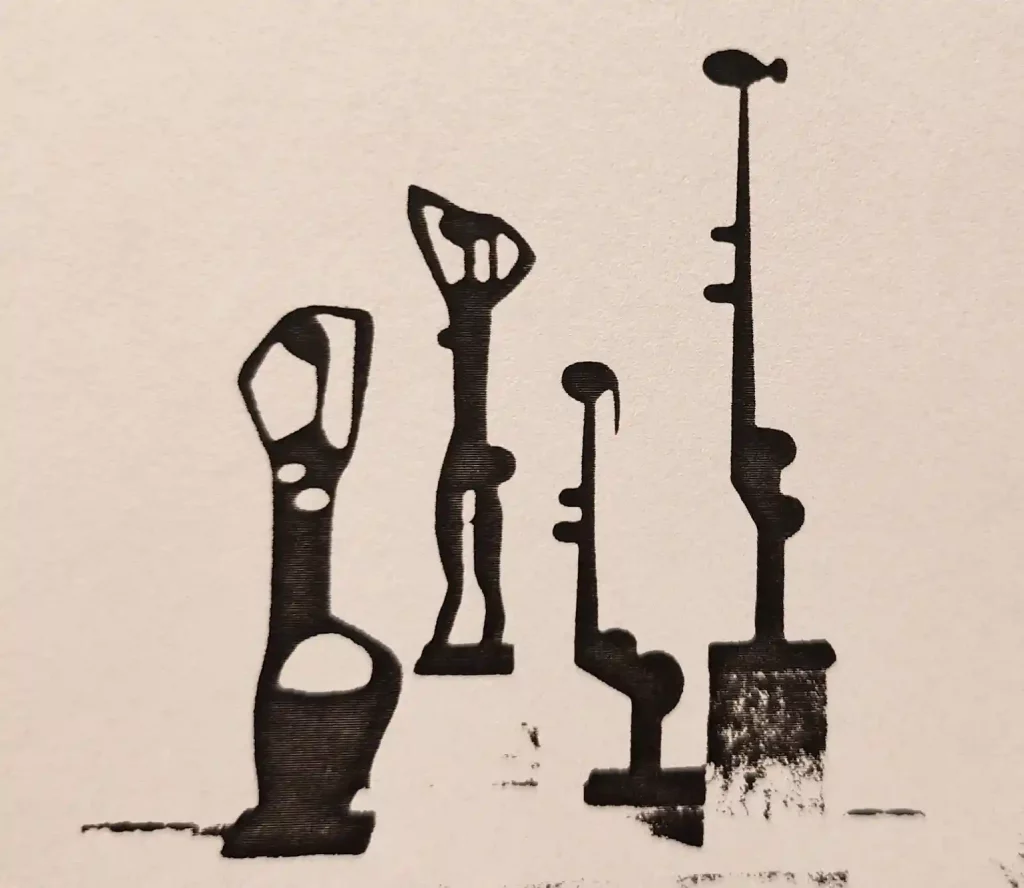

Robert Couturier, "Découpages", 1963, iron, 19 to 26 cm

View of the exhibition "Couturier - Richier: a sculptural friendship" in 2023 at the Galerie Dina Vierny © Galerie Dina Vierny / Romain Darnaud
This tapestry, previously immortalised in the famous installation "L'atelier du peintre", was recently rediscovered in the exhibition "Couturier - Richier, a sculptural friendship" at the Galerie Dina Vierny in 2023, then in an exhibition staged by decorator Sandra Benhamou at the Galerie Lucas Ratton the same year.
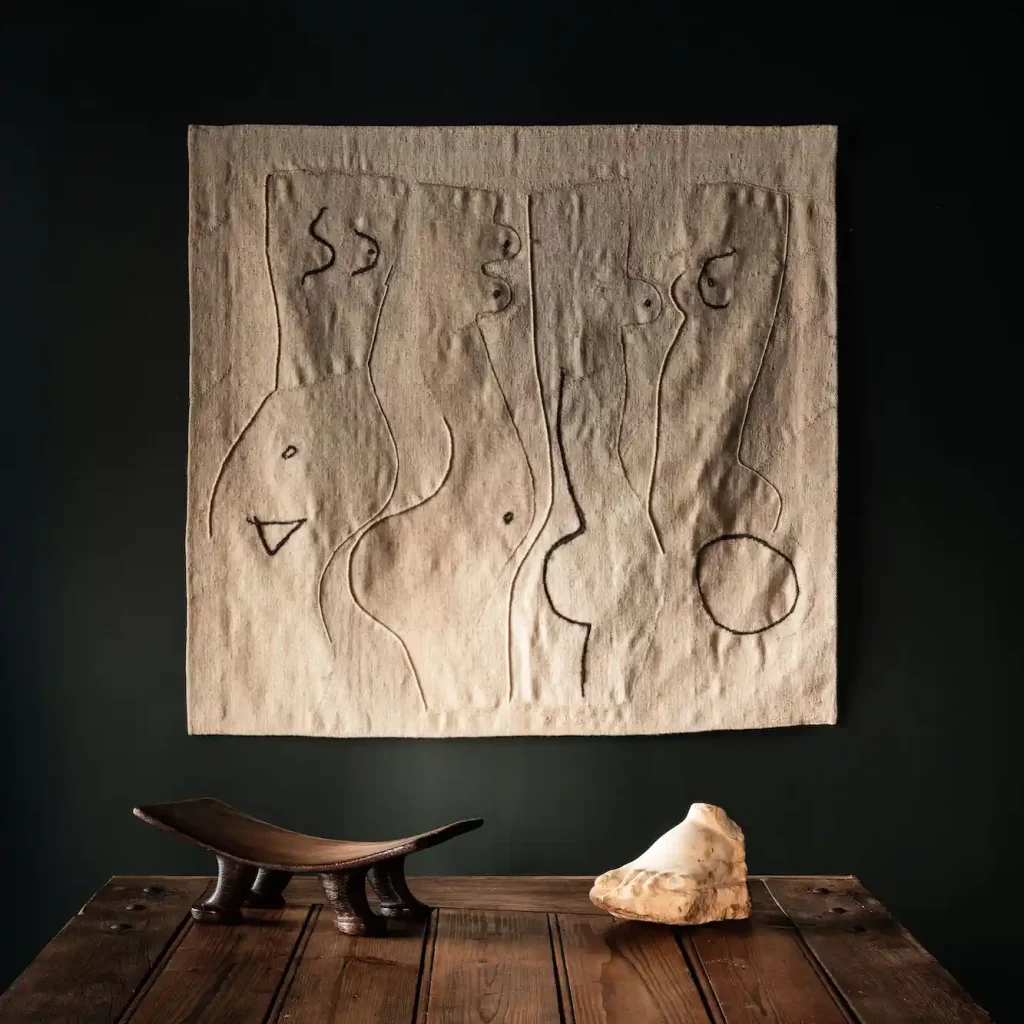
View of the "Lucas Ratton x Sandra Benhamou" exhibition in 2023 at Galerie Ratton © Edouard Auffray
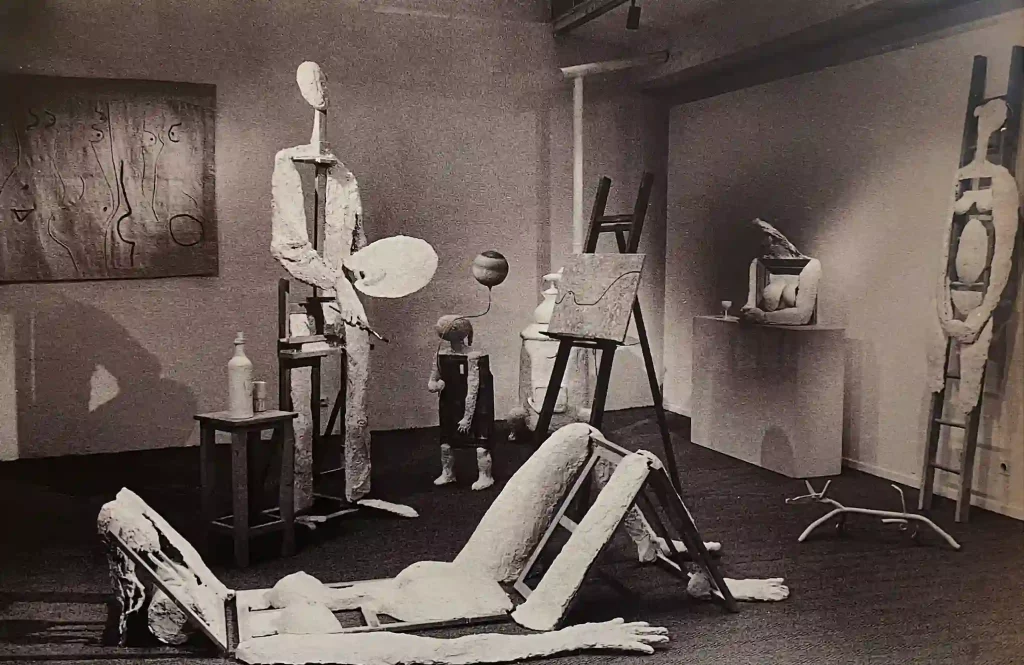
Robert Couturier, "L'atelier du peintre", 1990-91, Plaster and various objects, Composition of 7 sculptures: La Géante, Le Peintre, La Petite fille au ballon, Le Poêle, Femme accoudée au comptoir, La Femme-échelle and Le Chien.
For this new edition of six copies plus two artists' proofs, the task was entrusted to the Pinton manufacture. Located near Felletin, the "cradle of tapestry", this family-run business has been perpetuating the skills of Aubusson low-warp weaving since the 19th century, and continues to work with the great names of the 20th century, such as Léger, Delaunay and Le Corbusier, as well as with contemporary artists such as Claude Moulène, who took part in the "tombée de métier" of the Couturier tapestry (a ceremony in which the weaving warp is cut with scissors). The first copy of this edition, completed in January 2024, will be unveiled exclusively on our stand at Brafa from 28 January to 4 February 2024.
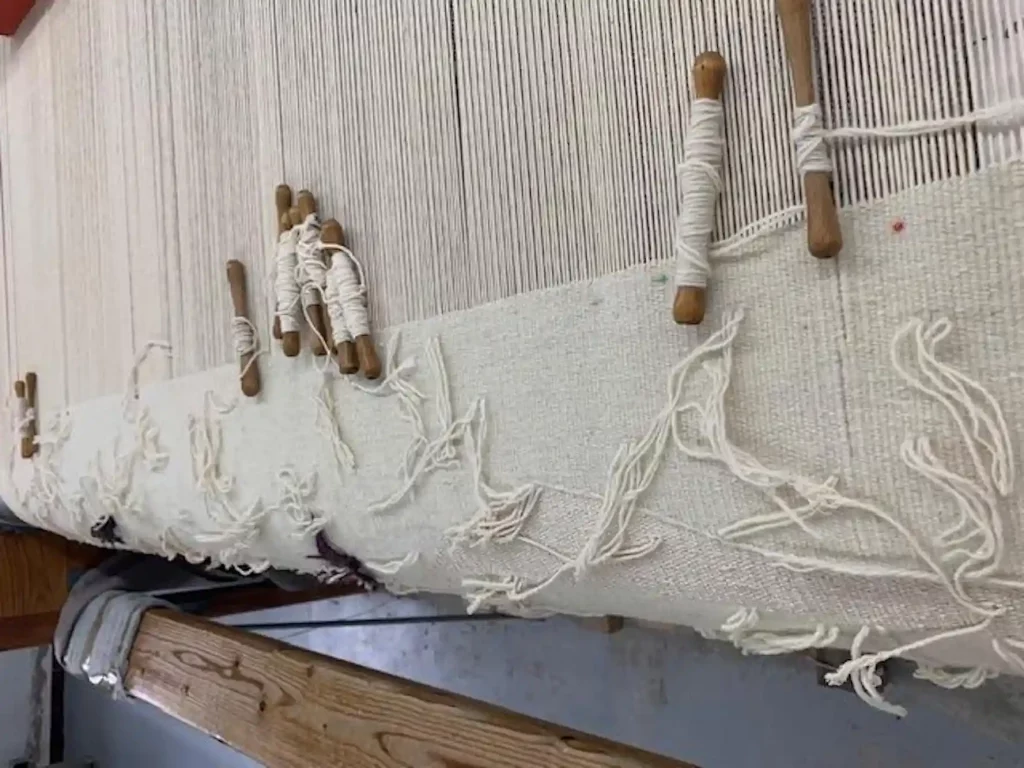
The tapestry being made in the Pinton workshops, 2023-24 © PINTON

Claude Moulène taking part in the tapestry loom fall
This tapestry, previously immortalised in the famous installation "L'atelier du peintre", was recently rediscovered in the exhibition "Couturier - Richier, a sculptural friendship" at the Galerie Dina Vierny in 2023, then in an exhibition staged by decorator Sandra Benhamou at the Galerie Lucas Ratton the same year.
 Robert Couturier, "Untitled", circa 1960, hand-woven Aubusson wool tapestry, 150 x 143 cm
Robert Couturier, "Untitled", circa 1960, hand-woven Aubusson wool tapestry, 150 x 143 cm Galerie Dina Vierny recently reissued one of the only tapestries made by Robert Couturier around 1960. Although better known for his work as a sculptor, the artist also produced drawings, lithographs, small furniture and tapestries, as shown here. However, we know of very few examples of the artist in this discipline, because in addition to "Untitled" from 1960, there is one other small-format tapestry and two unfinished tapestry cartoons.
The original tapestry, now in a private collection, was woven by Claire Rado (1941-2017) in her studio in Suresnes. Rado, who was also an artist, was particularly renowned for her transpositions of Pierre Soulages' cartoons into tapestry. This two-tone tapestry, almost square in format, presents four geometrically simplified female bodies, their silhouettes summed up in a few strokes that play on the texture of the fabric. This drawing is part of Robert Couturier's formal research in the early 1960s, at a time when he was undertaking his first sculptures in cut-out iron and when a long stay in Japan led him to a greater stylisation of forms, as shown by four cut-out statuettes made in Japan in 1963. This idea of drawn, simplified figures is reminiscent of Couturier's style, which asserted itself in the 1960s with his "image of sculpture", as the art historian Thierry Dufrêne points out: "It was the birth of a style of sculpture in which cut-out and deformation took precedence over modelling, the round and the life-size".
This tapestry, previously immortalised in the famous installation "L'atelier du peintre", was recently rediscovered in the exhibition "Couturier - Richier, a sculptural friendship" at the Galerie Dina Vierny in 2023, then in an exhibition staged by decorator Sandra Benhamou at the Galerie Lucas Ratton the same year.

View of the "Lucas Ratton x Sandra Benhamou" exhibition in 2023 at Galerie Ratton © Edouard Auffray

Robert Couturier, "L'atelier du peintre", 1990-91, Plaster and various objects, Composition of 7 sculptures: La Géante, Le Peintre, La Petite fille au ballon, Le Poêle, Femme accoudée au comptoir, La Femme-échelle and Le Chien.
For this new edition of six copies plus two artists' proofs, the task was entrusted to the Pinton manufacture. Located near Felletin, the "cradle of tapestry", this family-run business has been perpetuating the skills of Aubusson low-warp weaving since the 19th century, and continues to work with the great names of the 20th century, such as Léger, Delaunay and Le Corbusier, as well as with contemporary artists such as Claude Moulène, who took part in the "tombée de métier" of the Couturier tapestry (a ceremony in which the weaving warp is cut with scissors). The first copy of this edition, completed in January 2024, will be unveiled exclusively on our stand at Brafa from 28 January to 4 February 2024.

The tapestry being made in the Pinton workshops, 2023-24 © PINTON

Claude Moulène taking part in the tapestry loom fall
